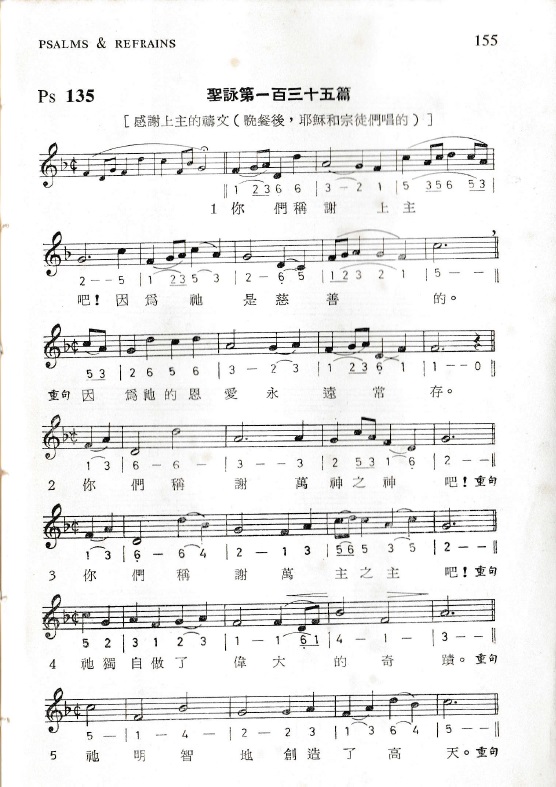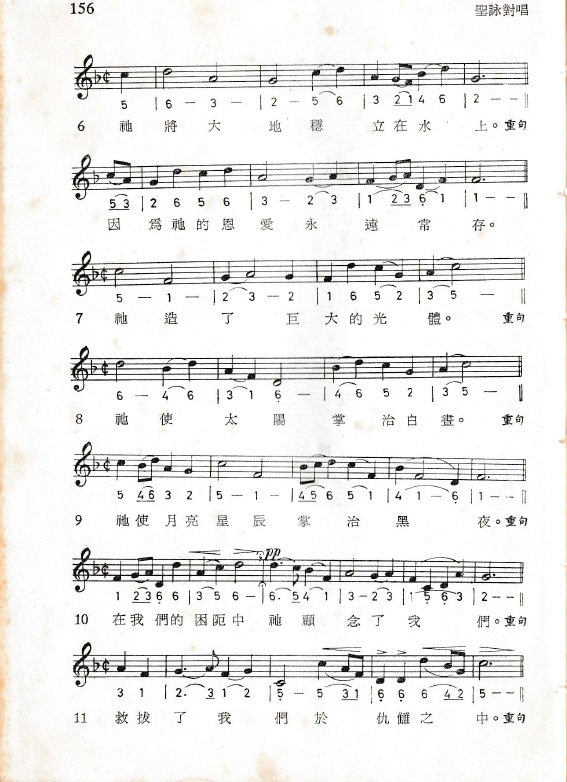A Catholic Hymnal from the 1960s, and more on Father Riganti.
19 December 2023Prof. Urrows writes:
Over the years I have found a number of treasures in unlikely places in Hong Kong, but my favorite haunt is the Michaelmas Fair at St. John’s Cathedral at the end of October each year. This year, one of the things I picked up is a small hymnal, simply entitled Catholic Hymnal, and published in March 1969 by the Hong Kong Catholic Truth Society.
In the Foreword, we learn that this hymnal took seven years (1962-69) to complete. Since it is only 158 pages in a small format (13x19cm), one might wonder what took the Hong Kong Diocesan Hymnal Committee so long to finish its work. There appear to have been two reasons, both of which hit the Committee in 1965. The first of these was the end of the Second Ecumenical Council (known popularly as Vatican II), which sat from 1962 to 1965. This is noted with a dour comment about “liturgical changes introduced in recent years”, but that doesn’t begin to describe the earthquake of reforms that hit the Roman Catholic church worldwide in 1965, with those affecting music satirized in Tom Lehrer’s classic comedy song, The Vatican Rag. Obviously, in 1965 the Committee had to some extent to begin all over again with a new set of (confusing) directives.
The second reason was the death of P. Antonio Riganti PIME (1893-1965) in the same year. Father Riganti has appeared in What’s New before (for July 2019), and he was the first Chairman of this hymnal’s Committee. I found in this hymnal two hymns composed by Father Riganti, as well as two ‘Psalm Refrains’ (what we would today call Responsorial Psalms) for Psalms 2 and 21, as well as five complete Psalms settings (22, 99, 116, 129, and 135). All of these are given with words and melody only. If there was an accompaniment edition, I have not seen it.
Father Riganti’s hymns are through-composed, and not verse-hymns. The first, Now in the week’s new dawn, is an entrance hymn in English with a traditional four-square feel, but also a fluid sense of melody. The words seem to be by one of Riganti’s committee colleagues, a Sister Maria Eucharistica. The second hymn in in Chinese, Lead the Holy Church. This is written in a hexatonic scale (no leading tone) and is printed with Western music notation and Chinese jianpu numerical notation. This is also the approach Riganti took with the responsorials, and the five complete Psalms (see Psalm 135 (=Psalm 136 in most psalters) below).
We see several different demands being catered to here. First, the emphasis on local-language worship. The second, is the approximation of melody using scales other than the European major/minor tradition (there are quite a few well-known hymns included, with both English and Chinese words.) Third, increasing congregational participation in singing. And finally, this hymnal reflects a period of transition in the Catholic church worldwide, as it tried to digest the directives of Vatican II. When it came to music, these directives were widely misrepresented and misunderstood. The Hong Kong 1969 Catholic Hymnal does better than many others from this period in balancing new and old, in my opinion. And I think much of this success must be due to the three years during which Father Riganti led the committee.
Earlier this year, a descendant of Father Riganti, who still lives in Italy, contacted The Project. We replied, with a request for more information about him, but to date we have unfortunately heard nothing back.

Psalm 135 (136), setting by Father Antonio Riganti.
